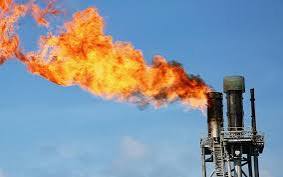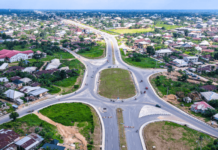Nigeria’s ongoing struggle with gas flaring in the oil and gas industry has taken center stage as the Nigerian Environment Ministry emphasizes the need for greater transparency and accountability from international oil and gas companies (IOCs).
The call for transparency comes in the wake of data showing that despite some progress, Nigeria faces an uphill battle in achieving its target of eliminating gas flares from hydrocarbon operations by 2030.

With the Nigerian National Petroleum Corporation reporting that around 324 billion cubic feet of gas was flared in 2023, the economic losses and environmental damage caused by such activities are clearly significant. Despite a slight decrease from previous years, the National Gas Flare Tracker revealed that Nigeria had flared approximately 148.7 million standard cubic feet of gas in the first half of 2024, representing a concerning 7% increase year on year. These figures position Nigeria as one of the top ten countries in the world in terms of gas flaring volumes, highlighting the scale of the issue.
The historical prevalence of gas flaring in the Nigerian oil and gas industry is attributed to the absence of infrastructure to capture and utilize the gas, leading to harmful pollutants being released into the atmosphere. Recognizing the need for change, the Nigerian Environment Ministry, through the National Oil Spill Detection and Response Agency (NOSDRA), has taken concrete steps to address this pressing issue.
NOSDRA has introduced the Nigerian Gas Flaring Tracker, a satellite-based platform designed to verify flare volumes, measure carbon dioxide emissions, and provide real-time monitoring and tracking of gas flaring activities. This technological tool aims to enhance transparency and accountability within the oil and gas sector, representing a significant step forward in the fight against gas flaring.
Despite these positive developments, Nigeria’s efforts to tackle gas flaring continue to encounter multifaceted challenges. These include a deficit of infrastructure for gas capture, storage, and transportation, inadequate regulatory enforcement, technological gaps, low community involvement, and insufficient investment. These hurdles underscore the complex nature of the issue and the need for a comprehensive and coordinated approach to address them effectively.
Iziaq Kunle Salako, the Nigerian environment minister, stressed the ministry’s commitment to collaborating with stakeholders to eradicate gas flares from hydrocarbon operations by 2030. This involves enhancing regulations, encouraging investment, transferring technology, building capacity, engaging with communities, and implementing other measures.
Such a multi-pronged strategy recognizes the need for a holistic approach that coordinates regulatory, technological, and community-driven efforts to achieve meaningful and sustainable progress in reducing gas flaring.
While Nigeria has made strides in addressing gas flaring, it is evident that the road to achieving the 2030 goal is rife with challenges. The collaborative efforts of the government, regulatory bodies, industry stakeholders, and the international community will be crucial in overcoming these obstacles and driving meaningful change.
By prioritizing transparency, accountability, and sustainable practices, Nigeria can work towards not only minimizing the environmental impact of its oil and gas operations but also maximizing the economic and social benefits for its citizens and the global community.



